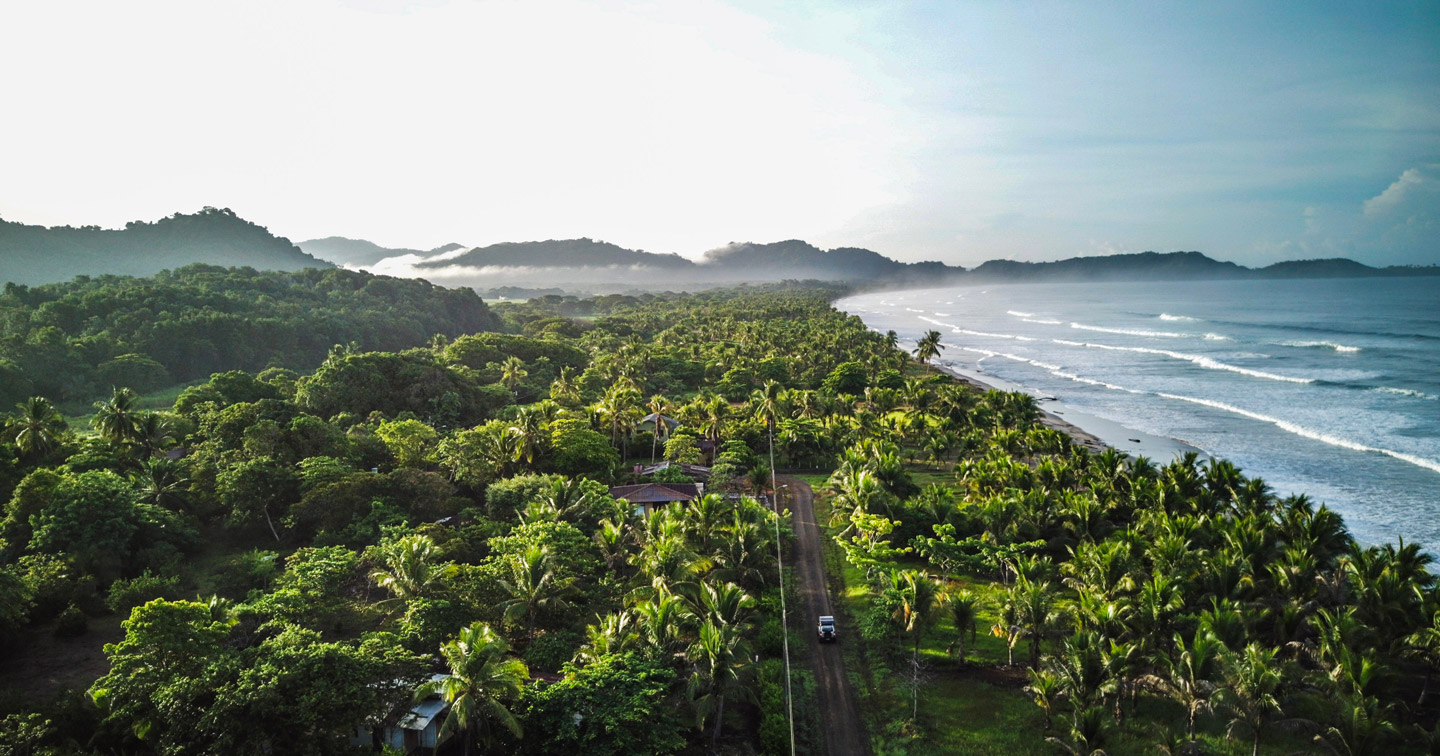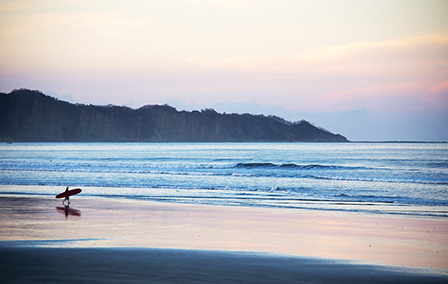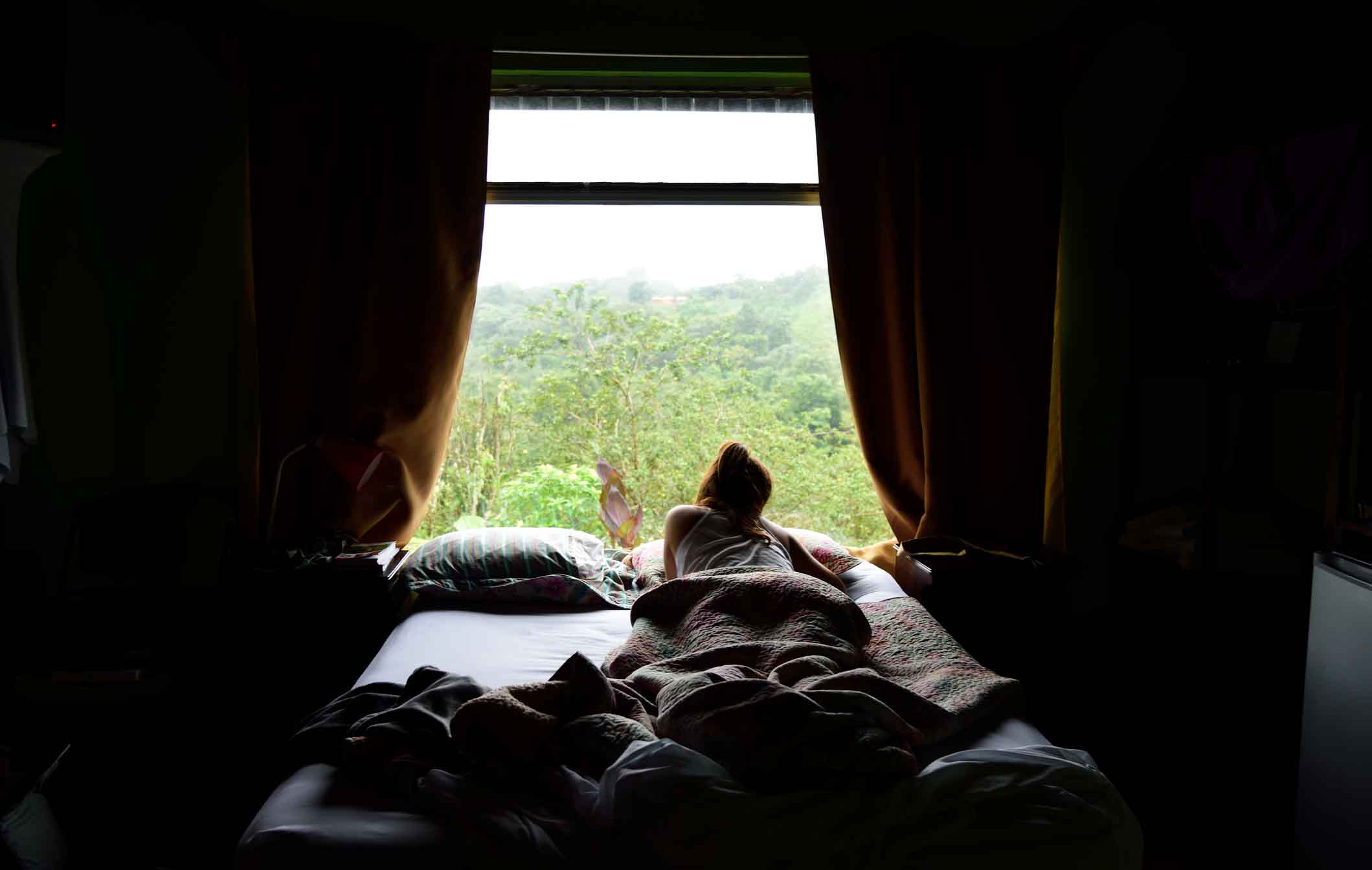Published 25th Oct. 2023
Reading time
The ‘know-it-all’ of the eco class, Costa Rica is consistently listed as one of the ‘greenest’ and ‘happiest’ places on the planet. And this eco-minded attitude is summed up by their ubiquitous slogan ‘Pura Vida’, which translates to ‘pure life’ or ‘simple life’. In order to protect its resplendent landscapes and dizzying biodiversity, the country has long championed sustainable travel, through Community Based Tourism initiatives, renewable energy and environmental education. Other countries (including Canada, Argentina and Brazil) have begun to follow suit in recent years, as the urge to travel more responsibly has become an irresistible force post-pandemic. As a visitor, how can you get in on the eco-action and make the most of Costa Rica’s sustainability expertise? In line with our concept of Kintsugi Travel (where we aim to build back travel with a more positive impact than before the pandemic), here are several ways to practise sustainable tourism in Costa Rica that benefit both the visitor and the destination.
Overtourism is the unfortunate consequence of lots of travellers flocking to same, sought-after destinations. And while we’re all for seeing the world’s bucket list toppers, we’re also keen to encourage travel to quieter destinations, in order to counteract congestion and overcrowding. Undertourism is all about taking the less-trodden path and embracing destinations that don’t always make the headlines. While Costa Rica doesn’t completely fit this bill (international tourist arrivals to Costa Rica more than doubled between 2000 and 2019), there are plenty of hidden corners of the country that our Travel Specialists can help you discover. By choosing to travel against the established tourist tide, you’re already helping to champion the concept of undertourism. Some lesser-known gems include the dinky fishing village of Montezuma, Chirripó National Park (home to Costa Rica’s highest peak) and the region around the Rio Pacuare.
Philantourism is the act of choosing a holiday in order to support a destination, and the idea plays into our desire to make travel a force for good. By simply spending money within local communities, you’ll be doing your bit to support the local economy and contributing to sustainable tourism in Costa Rica. Annual earnings from tourism amount to more than $1.7 billion US dollars for the Central American nation and it has been one of the fastest growing sectors of the economy. Our Travel Specialists can point you in the direction of our favourite experiences and eco-lodges, where spending your pennies will make the most difference.
Local communities play a pivotal role when it comes to sustainable tourism in Costa Rica. Environmental education begins early on, with the government investing in free public education at all levels and students taking sustainability courses throughout school. Costa Ricans are acutely aware of the importance of protecting their country’s magnificent eco-systems and a grassroots approach to conservation has flourished as a result. For example, Asociación ANAI is a non-profit organisation that has established several community-based conservation projects in the southern Caribbean region. Working with residents, they have created a marine conservation initiative to protect sea turtles along the Talamanca coast, which visitors can support by adopting a sea turtle. Meanwhile, the income from sea turtle tourism also provides income for local families.
Ensuring that traditional ways of living are maintained is an important part of sustainable tourism in Costa Rica. Indigenous communities act as custodians of culture, and the best way of really getting to know a country is by immersing yourself in its culture and local way of life. With 12 Indigenous groups and some 60,000 Indigenous people living in rural regions across the country, indigenous tourism is a concept that’s close to Costa Rica’s heart. When the Bribri community began to struggle with harvesting their cocoa crops in the 1980s, they turned to tourism as an alternative means of income; the women of the community formed a group called Stibrawpa (women who make handicrafts), and began to invite tourists to experience their culture. Today, they welcome around 40 visitors a month in peak season, with guides from the community sharing their sacred traditions, taking them on forest hikes to learn about the uses of different plants and trees, and teaching them how to make chocolate from cacao seeds. Similar cultural experiences include touring coffee plantations, visiting local villages and spending money within local communities.
Written by Luisa Watts

Whether you want to hit the hotspots or venture off the beaten track, our consultants will create a bespoke Costa Rica trip for you. Having scoured the country for the best properties, we offer everything from rustic lodges to luxurious hideaways. We can take you away from the crowds using our knowledge of hidden beauty spots; so instead of queuing for a waterfall in Arenal, you can enjoy a river all to yourself in Bijagua. With something for both families and couples, Costa Rica is best discovered on a self-drive trip – don't worry, you can leave the route planning to us.
ENQUIRE NOWPractical advice and inspiration for your next trip

Sandwiched between Panama and Nicaragua, among deliciously verdant greenery, lies the happiest country on earth: Costa Rica. Overflowing with exotic wildlife, misty volcanic peaks and surfers’ havens, it’s no wonder this pocket-sized country has become increasingly popular with travellers. A craggy chain of towering volcanoes act as a spine, running through the country’s middle and separating the two palm-fringed coastlines that feature on many a bucket list.
1st February 2025 - Costa Rica Travel Inspiration

Pint-sized Costa Rica might be small, but it sure is mighty. Fusing thrumming cities like San Jose and Limon with outstanding nature, this pocket of paradise boasts two rugged coastlines, a strip of smouldering volcanoes and plenty of lush rainforests, jade green lakes and misty mountain peaks. It’s no wonder we struggled to pick just six of the most beautiful places in Costa Rica for this roundup. From waterfall chasing at Tenorio Volcano National Park and rafting down the Pacuare River,
21st December 2024 - Costa Rica The Natural World

There’s more to Tunisia holidays than blissful beaches. History buffs are in luck with plenty of UNESCO World Heritage sites to explore, while architecture enthusiasts can admire the coastal towns’ white-washed facades. If natural wonders are more up your alley, Tunisia’s vast salt flats and towering palm groves are a must-see, while the artisanal treasures in the Medina of Tunis await those on a souvenir search.
9th December 2025 - Tunisia Travel Inspiration

Our team of destination experts will get to know you and your unique requirements for your holiday

We work with you to build an ultra-personalised holiday itinerary with your choice of accommodation, experiences and activities

All of our holidays include little extras designed to make a big difference to your trip, from fast-tracking you through airport check-in and security to our network of local Concierges